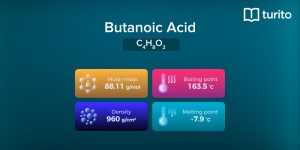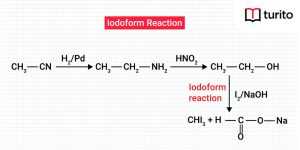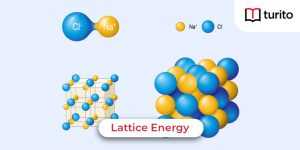Monosaccharides
This article will tell you the monosaccharide definition, different monosaccharide examples, and their functions. But first, let’s discuss it in brief.
You already know plants produce food in sunlight by taking carbon dioxide and water. This process is known as photosynthesis. The food plants produce for themselves is glucose.
If you combine thousands of glucose molecules, cellulose will form. Similarly, starch is also obtained from glucose in some way. Glucose, starch, and cellulose all belong to the class called carbohydrates. And you know that carbohydrates are energy-giving food and one of the nutrients we need to intake.
But do you know carbohydrates can be classified into different classes, and glucose, starch, and cellulose are part of these various classes? One of the classes is a monosaccharide, and glucose belongs to this category.
What is a monosaccharide?
The most straightforward and plain monosaccharide definition is that they are simple sugars because they are in their simplest form and cannot be broken down anymore.
Their name is very descriptive. The word ‘mono’ means one, and the word ‘saccharide’ means sugar. So, monosaccharide means ‘one sugar,’ standing by itself, with no other units attached.
Monosaccharides are uncomplicated carbohydrates that cannot be hydrolyzed into smaller molecules. They contain 3-7 carbon atoms. Each monosaccharide is connected via glycosidic bonds (linkages) to form the disaccharides or polysaccharides.
Types of Monosaccharides
About 20 monosaccharides occur in nature. These are divided into two types:
1. Aldoses:
The monosaccharides that contain an aldehyde (-CHO) functional group in their molecular structures are called aldoses. Since the carbon atom in the aldehyde group has only one vacant orbital, the aldehyde group is always placed at the terminal of the monosaccharide chain. They are further classified as tetrose, triose, pentose, etc., depending on the carbon atoms they contain.
2. Ketoses:
The monosaccharides that contain a ketone (>C=O) functional group in their molecular structures are called ketoses. Since the carbon atom in the ketone group has only divalent valence, the ketone group can be placed anywhere in the monosaccharide chain. Like aldose, they are also further classified as tetrose, triose, pentose, etc., depending on the carbon atoms they contain.
Monosaccharide Examples
In nature, there are around twenty monosaccharides. Based on their type, some monosaccharide examples are given in the tables below.
- Some aldose-type monosaccharide examples are
| Carbon Number | Aldose Class | Molecular Formula | Example |
| 3 | Aldotrioses | C3H6O3 | Glyceraldehyde |
| 4 | Aldotetroses | C4H8O4 | Erythrose, Threose |
| 5 | Aldopentoses | C5H10O5 | Arabinose, Ribose, Xylose, Lyxose |
| 6 | Aldohexoses | C6H12O6 | Glucose, Mannose, Galactose, Gulose, Talose |
| 7 | Aldoheptoses | C7H14O7 | – |
- Some aldose-type monosaccharide examples are
| Carbon Number | Ketose Class | Molecular Formula | Example |
| 3 | Ketotrioses | C3H6O3 | Dihydroxyacetone |
| 4 | Ketotetroses | C4H8O4 | Erythrulose |
| 5 | Ketopentoses | C5H10O5 | Ribulose, Xylulose |
| 6 | Ketohexoses | C6H12O6 | Fructose, Sorbose, Tagatose |
| 7 | Ketoheptoses | C7H14O7 | – |
Glucose
Sometimes, it is also known as grape sugar or dextrose. Glucose occurs in nature in a free state as well as a combined state. It is the sugar of the surface animals, the most crucial energy source for mammals, and is obtained by the digestion of starch.
About 20% of glucose occurs in ripe grapes. That’s why it is called grape sugar. Apart from grapes, other natural sources of glucose are honey, and sweet fruits like mangoes, pears, apples, peaches, etc. It is probably the most abundant compound on the earth.
Method of Preparation:
From sucrose (Cane-sugar):
When sucrose is hydrolyzed in the presence of a dilute acidic medium (dilute H2SO4or HCl), an equal number of moles of fructose and glucose are obtained.
C₁₂H₂₂O₁₁ (sucrose) + H₂O → C₆H₁₂O₆(glucose) + C₆H₁₂O₆ (fructose)
From starch:
For commercial purposes, glucose can be obtained by hydrolyzing starch in the presence of dilute sulphuric acid at 393 K under 2-3 atm pressure.
(C₆H₁₀O₅)n (starch) + nH₂O → C₆H₁₂O₆(glucose)
Structure of Glucose:
Glucose can exist in an open-chain form as well as a cyclic form.
1. Open Chain Structure:
Baeyer proposed the open-chain structure of glucose molecules. After various tests, scientists noticed that the molecular structure of glucose contains one -CHO group (at the terminal position), one 1° -OH group, and four 2° -OH groups.
Therefore, the open-chain structure of glucose is
OHC-(CHOH-CHOH-CHOH-CHOH)-CH2OH
There are four chiral carbons in this structure. Most importantly, the position of the -OH group on C-3 chiral carbon is oriented towards the left-hand side. In contrast, the remaining three, i.e., C-2, C-4, and C-5 chiral carbon atoms, are oriented towards the right-hand side.
2. Cyclic Structure:
In a further study, it was noticed that there were certain defects in the open-chain structure of glucose. Hence, Emil Fischer suggested that glucose (and other monosaccharides) has a cyclic hemiacetal structure to explain those limitations.
Throughout the hemiacetal formation, C5 -OH of glucose combines with the C1 -CHO group. It makes the C1 carbon a chiral or asymmetric carbon and, therefore, has two possible arrangements of -H and -OH groups around it. These are ⍺-D-glucose and 𝛽-D-glucose.
Structure of cyclic glucose:

Fructose
Another name for fructose is laevulose or fruit sugar. Fructose is the most critical of all ketoses. It occurs along with glucose in honey and other sweet fruits like mangoes, pears, sugar cane, apples, peaches, etc. It is called fruit sugar.
In the combined state, it is present in sucrose (disaccharide) and inulin (polysaccharide). In sucrose, it is linked with glycosidic bonds with glucose. If it is combined with other monosaccharides, then they form oligosaccharides.
Method of Preparation:
When sucrose is hydrolyzed in a dilute acidic medium (dilute HCl or H2SO4), fructose is obtained in an equal number of moles with glucose.
C₁₂H₂₂O₁₁ (sucrose) + H2O →C6H12O6 (fructose) +C6H12O6(glucose)
Structure of Fructose:
Similar to glucose, fructose also shows two types of structures.
- Open Chain structure:
The molecular formula of fructose is C6H12O6. Based on its reactions, it has been established that fructose contains one keto group at the C-2 carbon atom in the chain. Besides keto carbon, six carbon atoms are arranged in a straight chain, like in glucose.
Fructose belongs to D-series, like glucose, and it is laevorotatory. Therefore, its correct name is D-(-)-fructose. Therefore, the open-chain structure of fructose is
HOH2C-CO-CHOH-CHOH-CHOH-CH2OH
Its open-chain structure has two 1° -OH groups and three 2° -OH groups.
- Cyclic Structure:
Like glucose, fructose also exists in the cyclic form. Due to the presence of the keto group, it forms an intramolecular hemiketal. In this formation, the C6 -OH group of the fructose combines with the C2 keto group.
Therefore, C2 becomes chiral or asymmetric carbon and possesses two possible spatial arrangements of CH2OH and OH groups around it. As a result, D-fructose exists in two stereoisomeric forms, i.e., ⍺-D-fructopyranose and 𝛽-D-fructopyranose, like glucose.
Structure of cyclic fructose:

Configuration of Monosaccharides
While writing the correct name of glucose and fructose, D-(+) and D-(-) are mentioned before their names. In the case of optically active molecules, their enantiomers exist; hence, L-(-) and L-(+) are mentioned respectively before their names.
The letter ‘D’ and ‘L’ are used before the name of monosaccharides to represent the configuration of the -OH group at the last carbon atom of the carbon chain. The signs ‘+’ and ‘-‘ within the brackets refer to their optical rotation positions, i.e., dextrorotatory (for D) and laevorotatory (for L).
Summary
The easiest monosaccharide definition is that they are the simplest carbohydrate compounds that cannot be further hydrolyzed. It can be classified into two main categories. If it contains an aldehyde group, it is known as aldose. While if it contains a keto group, it is known as a ketose.
Most monosaccharides comprise one sugar, colorless, crystalline solids, and water-soluble. A few monosaccharides have a sugary taste. Examples of carbohydrates include glucose, fructose, and galactose.
Frequently Asked Questions
Q1. What are the chief sources of the monosaccharide galactose?
Answer: Galactose is a monosaccharide with the same formula as glucose and fructose (C₆H₁₂O₆) but is different in geometry. Some of the food sources which contain galactose are
- Milk: Milk contains about 10% galactose. Milk has a disaccharide called lactose. Lactose is composed of two monosaccharides named glucose and galactose. This sugar is also found in yoghurt, cheese, and other dairy products.
- Honey: Honey has a high concentration of galactose. It comprises 50-60% water, 20-30% carbohydrates, and only 5-10% protein.
- Corn: Corn is rich in galactose. It makes up about 2% of corn kernels.
- Legumes: Legumes are a considerable source of galactose. Beans, peas, lentils, peanuts, and chickpeas are some examples of legumes containing abundant galactose.
- Other grains: Wheat has about 2.5% galactose which is beneficial for the human body. Some other cereals that contain galactose are wheat, oats, and barley.
- Nuts: Nuts contain about 1-4% galactose.
Q2. What is the importance of monosaccharides?
Answer: Monosaccharides have many purposes within cells. The first and principal function is that they are used to construct and store energy. Most organisms generate energy by breaking down the monosaccharide glucose and collecting the energy released from the bonds.
Q3. What happens when glucose is treated with an alkali solution?
Answer: When glucose is treated with a concentrated solution of an alkali, it first turns yellow, then brown, and finally, a brown-resinous mass is obtained. However, when treated with a dilute solution of an alkali, it undergoes reversible isomerisation to form an equilibrium mixture of D-glucose, D-fructose, and D-mannose.
The same thing happens if you treat fructose or mannose instead of glucose.

Relevant Articles
Butanoic Acid – Structure, Properties, Uses
Butanoic Acid The carboxylic acid, butanoic acid, has the structural …
Butanoic Acid – Structure, Properties, Uses Read More »
Read More >>What is Iodoform? Characteristics and Uses
Iodoform The formula for Iodoform is CHI3. It is biotic …
What is Iodoform? Characteristics and Uses Read More »
Read More >>Lattice Energy – Explanation, Factors & Formulas
Lattice Energy Lattice energy evaluates the intensity of the ionic …
Lattice Energy – Explanation, Factors & Formulas Read More »
Read More >>Lead Acetate – Definition, Properties, Uses
Lead Acetate Have you ever licked lipstick when you sketch …
Lead Acetate – Definition, Properties, Uses Read More »
Read More >>




















Comments: